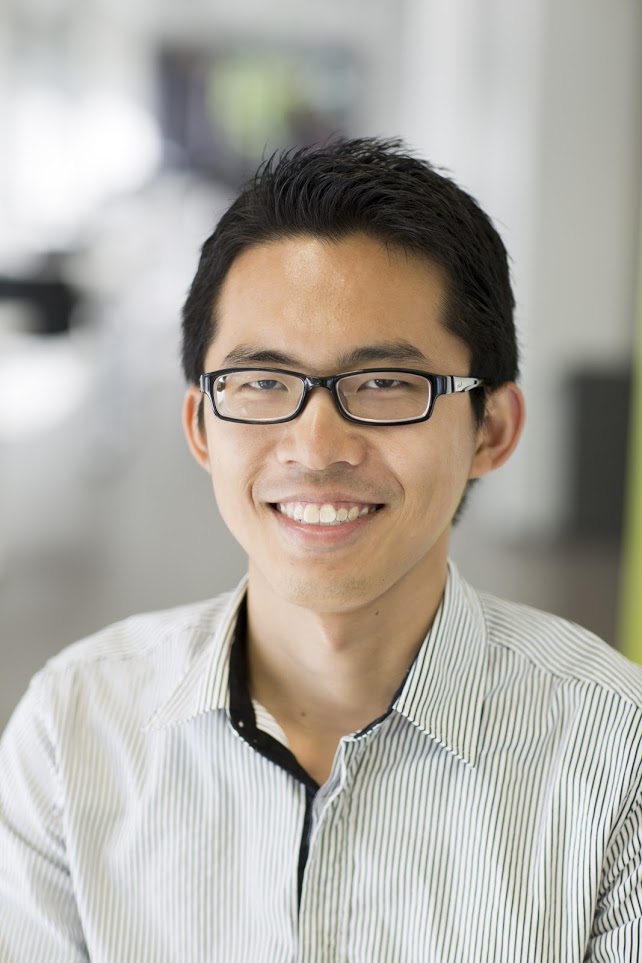Our Alumnus Speaks …
Take me to my destination
Alumnus Dr Goh Jing Qiang [BSc (Hons) 2010; Msc 2012] pursued his PhD in Science (Technology) at Tampere University of Technology (Finland) and graduated in 2016. He shared about his present undertaking at the Public Transportation Experimentation Unit of NEC Laboratories.
What do you have in mind as a career option upon graduation?
Upon the completion of my doctoral study, I was looking forward to the research/data analytics opportunities in the private industry. One of the key motivations here is to develop solutions to enhance the efficiency of operational tasks such as the manufacturing processes and transportation. I have been fortunate to have found employment in NEC Laboratories Singapore and that my research can contribute to the optimisation of public bus schedules which improves commuter experience.
Share with us your present undertaking.
I am currently a researcher with the Public Transportation Experimentation Unit of NEC Laboratories Singapore. My current research focuses on creating social solutions in the public transportation domain by leveraging advanced information and communication technologies. I apply machine learning and optimisation techniques to develop public transportation planning solutions, with the aim to improve the efficiency of bus services in real-time and smoothen commuters’ travel experience.
The public transportation domain has evolved immensely with the arrival of the Internet of Things (IoT), which allows devices/sensors to be closely connected via network. In this manner, valuable data can be processed in real-time to support the planning process. For instance, the automatic public transport fare collection system allows us to keep track of real-time demands of commuters on a certain route service. Images captured by cameras installed at buses or bus interchange platforms can provide useful information for understanding neighbouring traffic conditions.
In recent years, machine learning techniques have received huge attention in the transportation community as they could offer effective travel-time prediction as compared to traffic simulations. Moreover, data such as weather conditions can be taken into consideration by the machine learning model in predicting traffic flow. Research in the transportation domain has changed greatly due to the advent of machine learning, information and communication technologies.
How does physics fit into your current field of work?
My training in physics was focused on computational physics, and this required me to design optimised codes in performing demanding simulations. The training encouraged me to devise effective ways in processing the input and output data of different formats and to identify the root causes of programming errors by breaking problems into smaller pieces.
My physics education covered aspects such as optimisation and reasoning from the first principles. These help me to adopt the mentioned practices, which are essentially the commonalities of data handling processes employed by modern data scientists. In addition, I personally appreciate an education in quantum mechanics as it offered me the insight into probabilistic and uncertainty theories. The counter intuitive ideas taught in quantum mechanics have played a role in shaping my resilience in being at peace with uncertainty encountered at work or personal life, and I become more open to new ideas.
What are some lessons you have picked up in your workplace that help you along the way?
This could be trivial to many of us, but I cannot stress enough the importance of an effective communication, especially in conveying ideas to people of a different background. In my undergraduate days, I was mainly surrounded by peers from the same background, and it was straightforward to discuss any technical terms during my study. However, an effective teamwork in the workplace requires us to work with people of varying backgrounds. I still have room for improvement on this. I found that drawing diagrams helps me to communicate my ideas better. The sequence of diagrams can guide the thinking processes of the parties involved, and it helps the other party understands the picture better and to be able to seek further clarifications when doubts arise.
How do you think our undergraduates could better equip themselves to succeed in today’s workplace?
On a hindsight, I could have done better by leveraging the learning opportunities offered by NUS. I like to encourage my juniors to explore on their other interests that are not solely confined to the fields of quantitative subjects. Reading on different topics can offer us a wider perspective on the behaviours of this world, which includes the “laws” outside of physics. This also encourages us to become life-long learners.
I am a believer that one does not need to restrict one’s career options according to the degree one has obtained. Regardless of which era we are in, those who are active learners and never stop learning will likely to succeed in today’s workplace. My personal practice is to mark down any important learning points or references in online documents such as Google Docs. This is especially useful for my current work as I often encounter similar data processing solutions that I did in the past. Keeping a good learning diary will help us to recall the learned knowledge, and become effective life-long learner ourselves.

